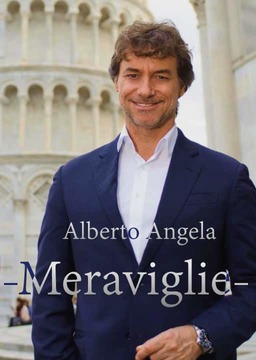









Difficulty:
 Intermediate
Intermediate
Italy
Alberto Angela takes us inside Castel del Monte and helps us imagine what it might have looked like when it was "alive." He uses the term piano nobile, which indicates the floor of a mansion where the noblemen or landowners lived, as opposed to the floors where the servants' quarters and kitchens would have been.
Difficulty:
 Intermediate
Intermediate
Italy
Wonderful aerial photography shows Castel del Monte and its crown-like octagonal shape. Frederick II was particularly fond of the castle because it was an ideal location to hunt small game with his falcons.
Difficulty:
 Intermediate
Intermediate
Italy
The first stop is Italy's easternmost point, the Punta Palascìa and its 19th century lighthouse. Alberto Angela then shows us another site in the Apulia region, Castel del Monte, a breathtaking crown-shaped castle built by Frederick II in the early 1200s.
Difficulty:
 Intermediate
Intermediate
Italy
We say goodbye to Agrigento's Valley of the Temples and get a close look at the awesome Riace Bronzes in Reggio Calabria. The two life-size Greek bronzes date to the 5th century BC and were discovered off Riace by a scuba diver in 1972.
Difficulty:
 Intermediate
Intermediate
Italy
The Ephebe of Agrigento is considered to be one of the masterpieces of Greek sculpture of the fifth century BC in Sicily. It is held in the Regional Archeological Museum of Agrigento, in which we also find a Roman sarcophagus in marble from the second century AD with scenes depicting the life of a child who died at an early age.
Difficulty:
 Intermediate
Intermediate
Italy
Although we don't know their function, the Telamons, gigantic statues alternating with the semi-columns of the Temple of Jupiter, were as high as a six-story building. A reconstruction of the temple in the Pietro Griffo Regional Archeological Museum allows us to imagine just how imposing they must have been.
Difficulty:
 Intermediate
Intermediate
Italy
Alberto Angela shows us how the Greek Temple of Zeus was built to be seen from great distances.
Difficulty:
 Intermediate
Intermediate
Italy
Alberto Angela talks about how Akragas came to be, how its name changed over time, and about what information has been obtained from archeological digs.
Difficulty:
 Intermediate
Intermediate
Italy
The temple dedicated to Concordia was built on an ancient seabed from two million years ago, and is one of the most remarkable structures from the Greek world. Alberto Angela explains why it is the only one still standing.
Difficulty:
 Intermediate
Intermediate
Italy
We're in the south of Italy, where many cultures have merged. Alberto Angela takes us to visit the magnificent Valley of the Temples in Agrigento, Sicily.
Difficulty:
 Intermediate
Intermediate
Italy
Adriano has to go back to Ivrea because of a death in the family, and that's where this first episode leaves us. It is interesting to note all the kinds of professionals who contributed to producing this biopic.
Difficulty:
 Intermediate
Intermediate
Italy
Adriano and Grazia start seeing each other romantically, but her parents do not approve because of the age difference and because Adriano is still a married man.
Difficulty:
 Intermediate
Intermediate
Italy
Adriano tells Grazia his ideas for a new kind of city. Back at the factory, cuts are being made, and there is talk of layoffs. We also discover an ironic fact about Adriano.
Difficulty:
 Intermediate
Intermediate
Italy
There is more to tell about the incredible, huge cistern in the center of Matera. With this, the episode concludes, with an invitation to join in the next journey of discovery.
Difficulty:
 Intermediate
Intermediate
Italy
As luck would have it, Adriano has a chance encounter with a young woman who has a problem he is uniquely capable of solving. Teresa and her daughter Maria have an unexpected caller.
Are you sure you want to delete this comment? You will not be able to recover it.